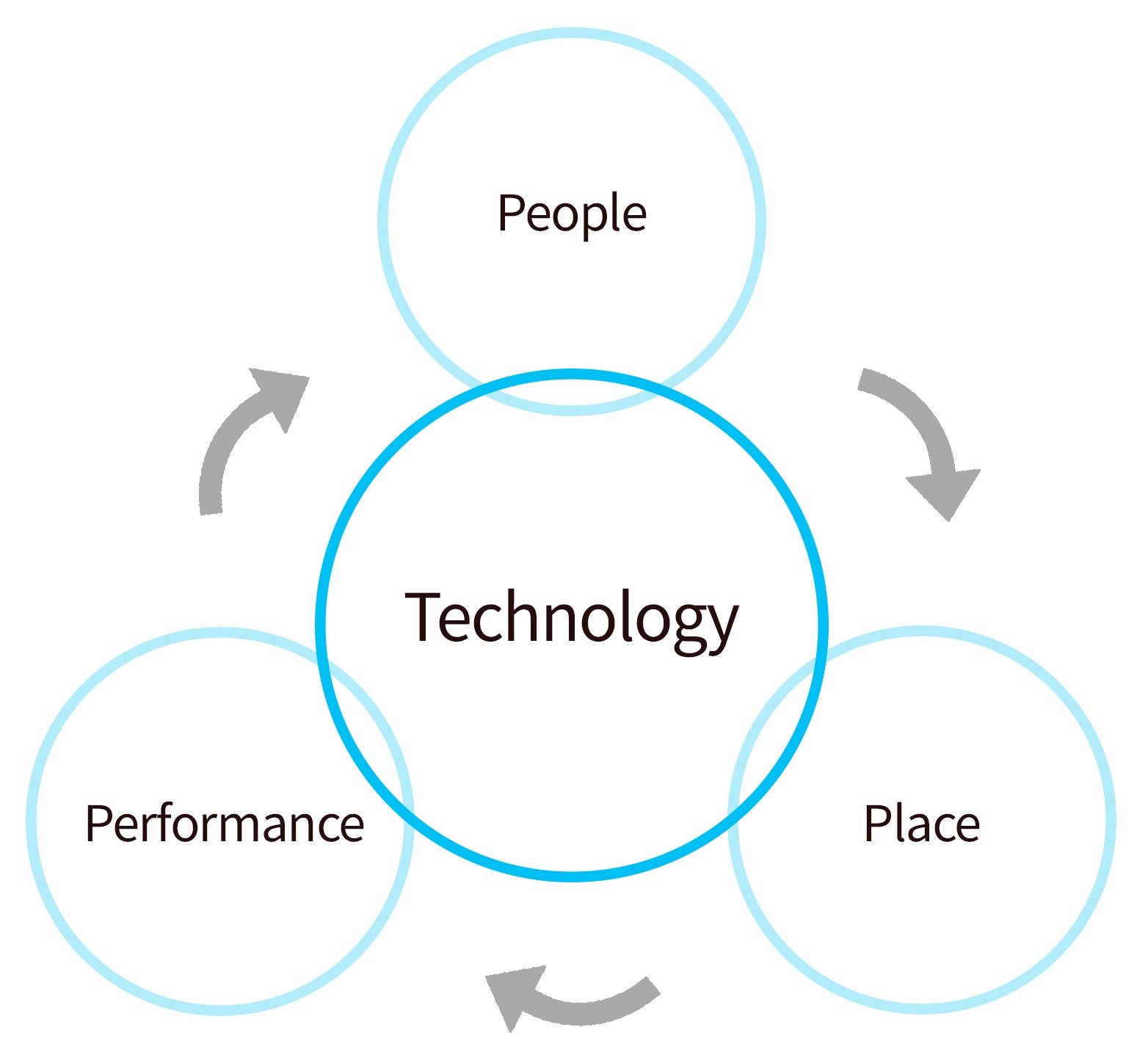Technology enables an organisation to develop effective workplace strategies that will enrich the business’s people, place and performance. Technology can identify the right data and manage workplace changes to help businesses make decisive and informed decisions regarding their real estate.
 Workspace occupancy sensors can help organisations identify what types of people they have in their office. The senor technology will also determine what percentage of the team are fixed desk users and who works more remotely. By analysing this information, a business can begin to build a picture of what types of workspaces and tools they need for their people to increase overall performance and empower individuals.
Workspace occupancy sensors can help organisations identify what types of people they have in their office. The senor technology will also determine what percentage of the team are fixed desk users and who works more remotely. By analysing this information, a business can begin to build a picture of what types of workspaces and tools they need for their people to increase overall performance and empower individuals.
{{cta(‘3b099685-6912-4dab-9b84-cbe52c38ae43’)}}
There are different real estate drivers that might prompt a workspace occupancy study:
- Reducing building costs
- Improving utilisation within the building
- Accommodating a growing workforce
- During a relocation
- Refurbishment projects
- Consolidation of buildings
- To right size real estate
Driving change with technology
Versatile occupancy sensors can help business leaders achieve goals quickly with 100 per cent accurate data. Real estate and Facilities Managers can categorically assess how many people can fit into which spaces, freeing up other space for collaboration, reflection and “weisure”. The device can also monitor individual assets on an hourly, daily, weekly or monthly basis to gain ongoing utilisation data. This information can be used to plan fail-safe workplace strategies and influence future real estate decisions.
Technology can help to create smart, collaborative cultures that attract top talent. This also has a knock on effect for HR and their budget – happy people equals higher retention, and higher retention means greater knowledge and less training. Bearing in mind the average cost to replace a team member is over £30,000, this can save a business some considerable money.
Managing these new flexible spaces is often an oversight, but change management should not be underestimated. To keep control of the new spaces workplace management technologies can be implemented to help people find and book the spaces.
 For example, room booking software can help to administer collaborative spaces and monitor the usage overtime. A meeting room for instance could be highly utilised but suffer from low occupancy. Data can indicate to a company that they need to reduce the meeting room size or create smaller collaboration rooms rather than eradicate the space or build expensive new suites. By using the space efficiently, companies can make enormous savings per room.
For example, room booking software can help to administer collaborative spaces and monitor the usage overtime. A meeting room for instance could be highly utilised but suffer from low occupancy. Data can indicate to a company that they need to reduce the meeting room size or create smaller collaboration rooms rather than eradicate the space or build expensive new suites. By using the space efficiently, companies can make enormous savings per room.
Desk booking technologies can help deliver shared desk environments for flexi workers without causing disruption to fixed desk workers. Desk sharing allows a desk to person ratio of 1:1 to change to 1:1.5 or more, meaning a company can afford to significantly reduce the amount of desks without feeling any change in productivity or staff discomfort. Considering the average cost of a desk in London is £10,000 per year; it’s easy to see the financial benefits this solution can create.
Accurate workspace data leaves no room for error when proposing changes to the real estate and ensures every employee is taken into account.